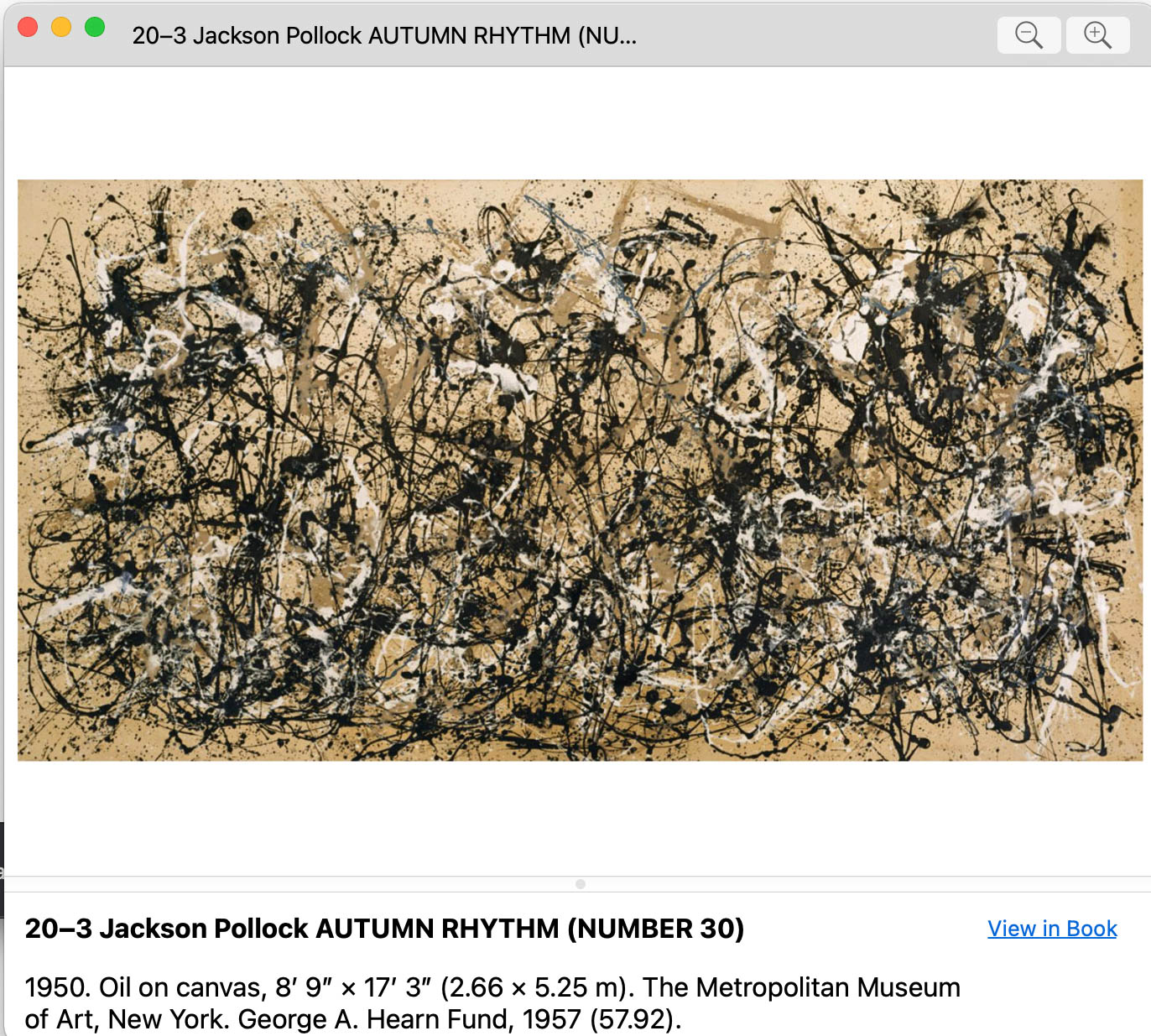Discussion: Social and Political Commentary in Art
- Select one specific work of art from chapters 14, 17, 18, 19, or 20 that the artist was motivated to create in direct response to a specific political or social concern of the artist's own time period (race, gender, poverty, war, political unrest, etc.). Cite the image in your post and describe the social or political issue it addresses.
Deeply affected by the ideas of Surrealism and the teaching of Hans Hofmann, New York artists of the 1940s began working in a style collectively called Abstract Expressionism. This term designates not an organized movement but the work of a wide range of loosely affiliated artists active in the 1940s and 1950s bound by a common purpose: expressing their profound social alienation in the wake of World War II and making art that was both moral and universal. Two major approaches emerged: Action Painting, characterized by active paint handling; and Color Field Painting, distinguished by broad sweeping expanses of color. Some art historians prefer to refer to the work of these artists simply as the New York School. ( Art: a brief history, 2010, p 552). In this action painting, AUTUMN RHYTHM from 1950, created by Pollock, in Oil on canvas, and has the dimensions of 8′ 9″ × 17′ 3″ (2.66 × 5.25 m). The artist placed his oversized canvas on the floor and use his paint brush to drip and drop paint randomly.
2. What specific visual imagery or clues in the artwork convey the artist’s message to the viewer? you can notice how he used black, white and shades of brown to create a motion of loops and lines over the surface of the canvas. Delicate skeins of paint effortlessly loop over and under one another in a mesmerizing pattern that spreads across the vast surface of the canvas. As the title of this and other Pollock paintings suggest, the artist seems to have felt that in the free, unselfconscious act of painting he was giving vent to primal, natural forces. Pollock said that he was creating for “the age of the airplane, the atom bomb, and the radio,” and the works do seem to embody something of the tensions of the Cold War period, as each side silently threatened the other with instant annihilation. ( Art: a brief history, 2010, p 554).
3. What role do images play in society today? Give a specific example to support your points. Every artist plays a different and necessary part in contributing to the overall health, development, and well-being of our society. Creative thinkers and makers provide their communities with joy, interaction, and inspiration, but they also give thoughtful critique to our political, economic and social systems pushing communities to engage thoughtfully and make steps toward social progress. An artist has the ability to feel strongly to be sensitive to things and express this in the paint, gesture, or color. The artist focus on the environment or the memory of a feeling. Sometimes, it’s a burden for the artist to carry all this emotion, to be so sensitive. In my point of view, many paintings are mainly about the artist's self-expression communicated out there on the canvas, but really I think it is everyone’s expression, the artist here is just a messenger, but sometimes we tent to focus more on the messenger than the message it self, artists are generally here to tell a story either it in a painting or a image, because everyone has a story and every image tells a story.
Reference Sources: Stokstad, Marilyn and Michael W. Cothren. (2010). Art: A Brief History.




Comments
Post a Comment